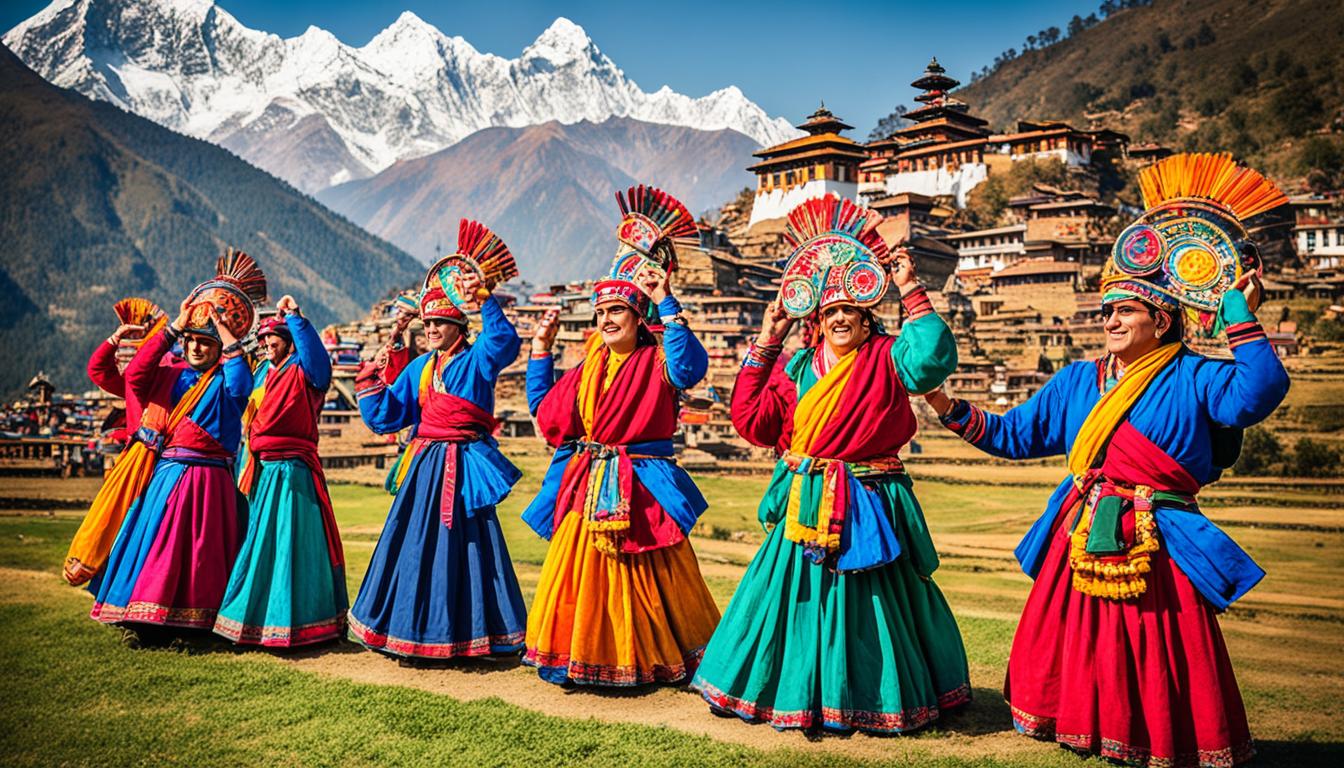Nepal, set in the Himalayas, has centuries-old cultures exciting people worldwide. Its mix of ethnic and religious traditions is a rich tapestry. These customs, beliefs, and practices show the beauty of its people and land.
Nepal boasts over 125 ethnic groups, each with its unique culture. This diversity makes Nepal’s culture vibrant and varied. You’ll find these traditions everywhere, from Kathmandu’s busy streets to quiet mountain towns.
My visit to Nepal was made special by the welcoming nature of its people. I took part in Dashain, a festival celebrating family and blessings. The happiness and togetherness during this time left an impression on me.
Exploring further, I found stunning temples, chanting monks, and skilled artisans. They all contribute to Nepal’s fascinating cultural fabric. It felt like I was part of uncovering their ancient stories.
Key Takeaways:
- Nepal is home to more than 125 distinct ethnic groups, each contributing to the country’s cultural diversity.
- Traditional customs and beliefs are deeply ingrained in the everyday lives of Nepalese people.
- Festivals like Dashain and Tihar are an integral part of Nepalese culture, celebrating the victory of good over evil.
- Nepal’s cultural heritage can be witnessed in its stunning architecture, vibrant traditions, and artistic expressions.
- Exploring Nepal’s customs and traditions provides a unique and immersive experience for visitors.
Traditional Clothing and Fashion in Nepal

Nepal has a rich culture shown in its traditional customs. Its traditional clothing and fashion highlight this cultural wealth.
The clothing is full of bright colors and detailed designs. Women wear saris or long skirts with pretty blouses. This shows the grace of Nepalese fashion. Men might wear dhotis or kurtas, which are very traditional.
People in Nepal wear these outfits on special days and for cultural events. This shows how important their culture is. It reminds everyone to value and respect the country’s traditions.
While traditional wear is still important in Nepal, the country has welcomed Western fashion. Western clothes like jeans and t-shirts are popular but with a Nepalese twist.
The mix of old and new fashion in Nepal is a sign of change. It shows how the culture there is both modern and deeply respectful of its traditions. This mix creates a unique and harmonious style.
Visitors to Nepal often notice the unique way locals dress. They find the traditional clothing fascinating. It helps them understand more about the rich culture of Nepal.
Nepalese Cuisine: A Blend of Flavors and Cultural Influences
Nepalese food shows the country’s mix of cultures from India, Tibet, and China. This mix creates a unique taste for both locals and tourists. You can find a wide variety of dishes, making the food scene exciting.
Dal bhat is a common meal in Nepal. It’s a lentil soup served with rice and veggies. Beyond filling the stomach, it shows the importance of eating together. This points to the value of family and community in Nepalese culture.
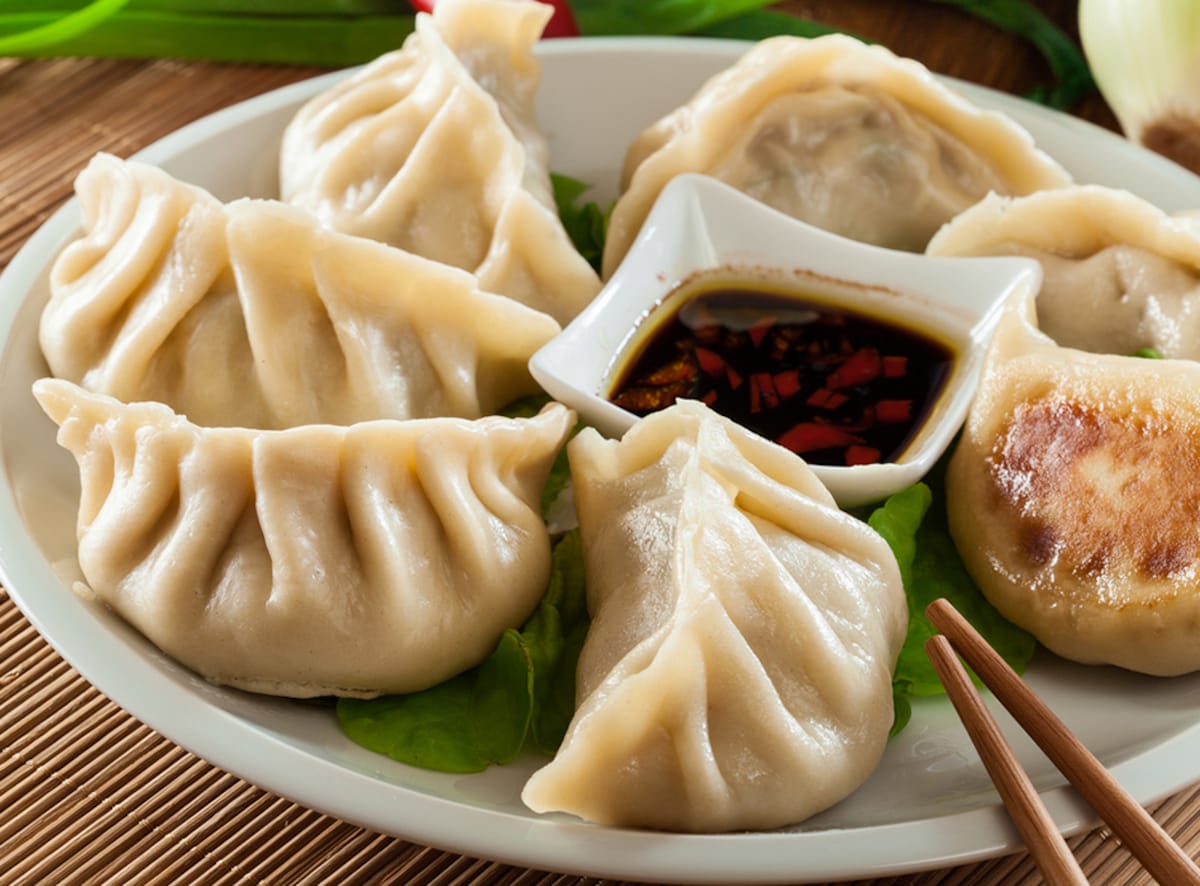
Momos are crowd favorites. These are dumplings filled with meat or vegetables and steamed. They carry a taste of Tibet and China. Momos work well as a snack or a full meal. They’ve gained fans worldwide.
Tea is also very important here, grown in the stunning Himalayas. Nepal is famous for its black, green, and herbal teas. They don’t just offer a good drink; they welcome people warmly. Offering tea means showing goodwill in Nepalese tradition.
| Traditional Nepalese Dishes | Description |
|---|---|
| Dal Bhat | A lentil soup served with rice and a variety of vegetables, dal bhat shows the importance of eating together in Nepal. |
| Momos | These are small, steamed dumplings filled with either meat or vegetables. They reflect Tibetan and Chinese food in Nepal. |
| Tea | Nepal’s tea culture is well-known, thanks to Himalayan-grown tea. It’s a symbol of welcoming and hospitality. |
Nepalese cuisine’s mix of flavors shares more than just great tastes. It reveals the country’s diverse cultural heritage. Even with the world’s influence, Nepal’s food traditions stay true to its deep cultural roots.
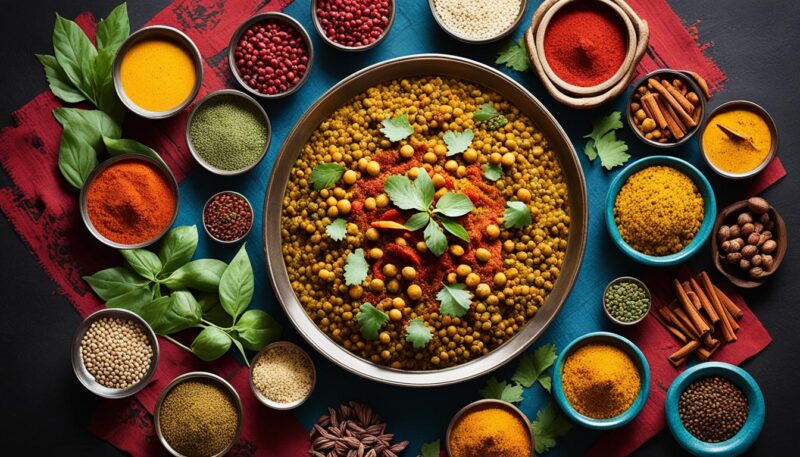
Art and Handicrafts: Preserving Nepal’s Traditional Heritage
Nepal is well-known for its diverse culture, showcased in its art and handicrafts. These traditional forms are crucial in keeping Nepal’s culture alive. They also display the country’s unique character.
Thangka painting is a prominent art form in Nepal. It involves creating detailed scroll paintings that show Buddhist deities, religious scenes, and Tibetan myths. The artists use mineral pigments, gold leaf, and careful brush strokes. They do this to make the colors and symbols stand out. Thangkas are important for both showing spiritual beliefs and teaching about Buddhism.
Pottery and wood carving are also important in Nepal. Different ethnic groups have their own pottery and woodwork styles. They make everything from detailed wooden structures to beautifully painted pottery. These crafts show off Nepal’s cultural variety and the skill of its people.
“Nepal’s art and handicrafts are not merely decorative but also serve as tangible links to our rich cultural heritage. They connect us to our ancestors, reminding us of our roots and the importance of preserving our traditions.” – Lokesh Karki, Nepali artist
These arts have been passed down for generations. Older artists teach younger ones to keep the traditions alive. By supporting young artists and showing their work, Nepal is working to save its cultural traditions for the future.
The Cultural Significance of Nepali Art and Architecture
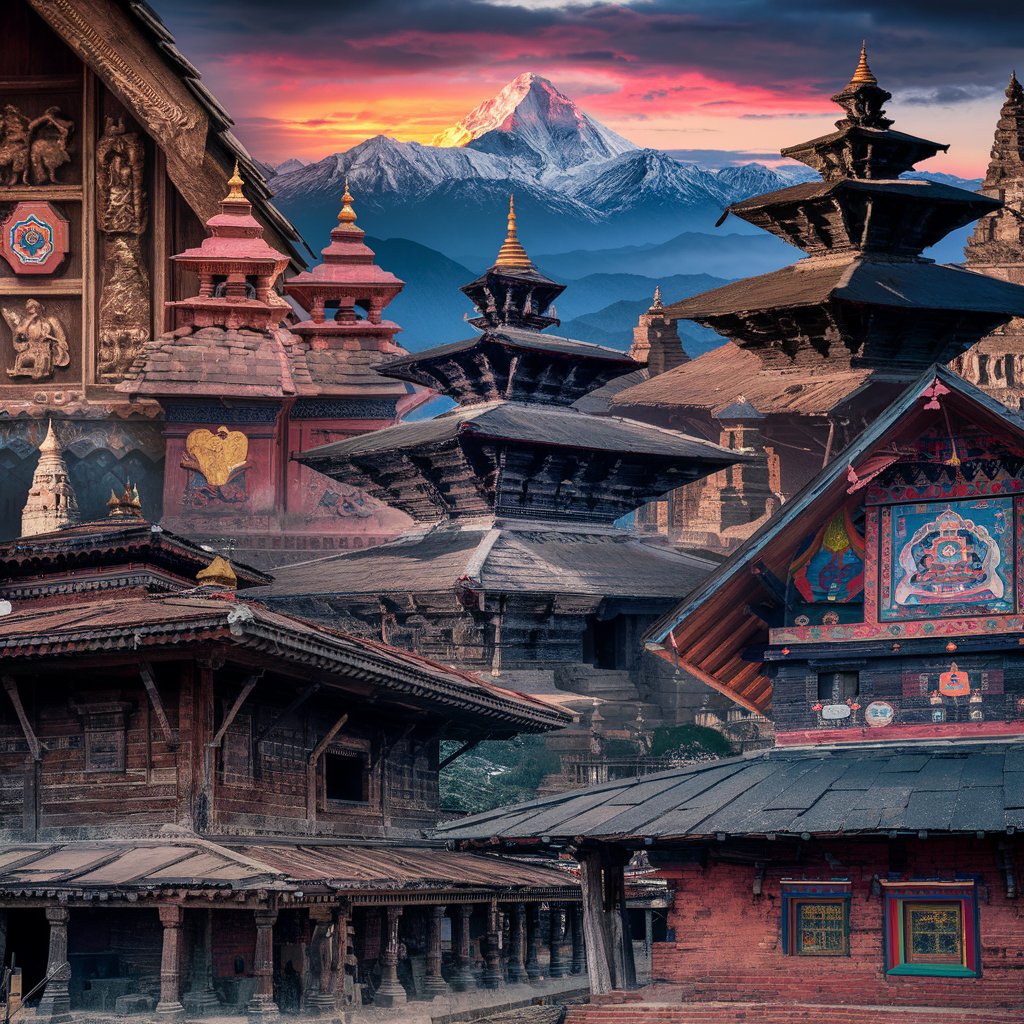
Nepali art and architecture are more than just beautiful. They reflect Nepal’s deep cultural values. The intricate designs and symbols in Nepali art show the country’s many religious and cultural beliefs. Everything from old temples’ carvings to colorful murals are part of this story, inspiring pride in Nepali culture.
Preserving Nepal’s Cultural Diversity
The art and handicrafts of Nepal highlight its cultural variety. They let visitors see the traditional customs of the country. By valuing Nepali art, we help keep its culture thriving. This ensures future generations can enjoy and learn from its rich heritage.
You can also read: Significance of the Ganges River
| Art Form | Description |
|---|---|
| Thangka Painting | An intricate scroll painting depicting Buddhist deities and religious scenes using mineral pigments and gold leaf. |
| Pottery | Handcrafted ceramic vessels and pottery with unique glazes and designs representing different ethnic communities in Nepal. |
| Wood Carving | Intricately carved wooden windows, doors, and architectural elements showcasing the diverse styles of Nepali craftsmanship. |
Social Customs and Etiquette in Nepal
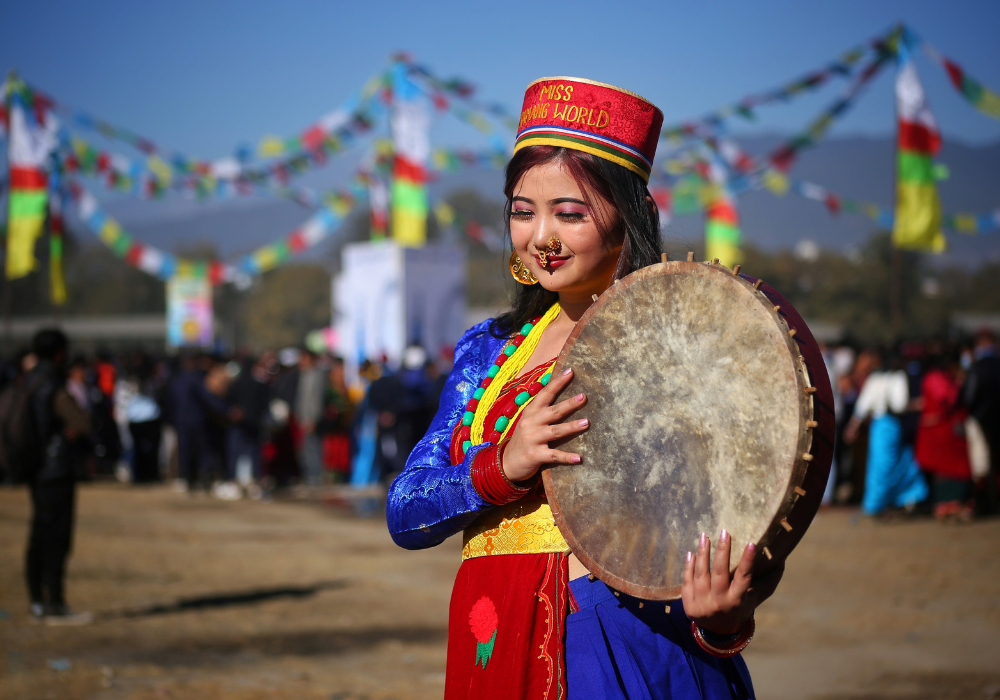
Nepalese people are loved for their welcoming nature and the respect they show to all. Their society is focused on being respectful and offering kindness. These values are at the heart of Nepal’s customs and etiquette.
Taking off your shoes before you enter a home is a big deal in Nepal. It’s a way to honor the place and keep it clean. When you visit someone, it’s super important to take your shoes off. This shows you are well-mannered.
People in Nepal speak using titles that show respect, like sir or madam. This is true especially when talking to older people, teachers, or leaders. It’s a big part of showing honor in their culture.
In Nepal, welcoming guests with a cup of tea or a snack is a must. Nepalese are proud to have guests and they go all out to make them feel at home. This is an example of how celebrating hospitality is key in their culture.
The idea of family is very strong in Nepal, where many homes have multiple generations. Kids are taught to always be respectful to their elders. Nepal’s culture really values family connections and the care they share for one another.
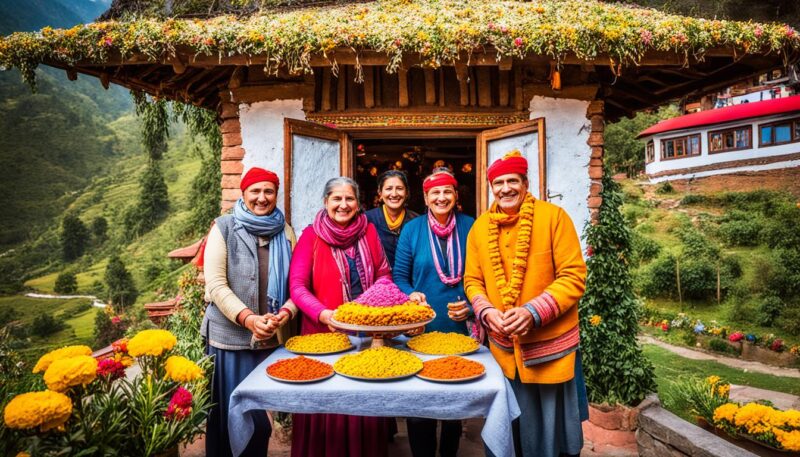
Customs and Etiquette in Nepalese Society:
- Removing shoes before entering a home
- Using formal titles and greetings
- Offering a cup of tea or a snack to guests
- Respecting elders and speaking politely
Nepal’s social practices highlight its cultural beauty and warmth. Through these customs, they accentuate respect, welcoming spirit, and family bond. It makes Nepal a place where everyone, including visitors, feels at home. This encourages people from all over to explore and experience its rich culture.
| Customs | Etiquette |
|---|---|
| Removing shoes before entering a home | Show respect to the household |
| Using formal titles and greetings | Show respect to others |
| Offering a cup of tea or a snack to guests | Show hospitality and make guests feel welcome |
| Respecting elders and speaking politely | Emphasize the importance of family and respect |
Conclusion
Nepal’s cultural traditions are a rich mix of old and new. They include religion, festivals, clothing, food, art, and social norms. These traditions offer a special look at Nepal’s lively culture. By getting involved in Nepal’s way of life, you can truly understand its enchanting festivals, customs, and practices.
Learning about Nepal’s customs is unforgettable. Its festivals like Dashain and Tihar are full of vibrant colors, music, and dance. You can also experience the significance of traditional clothes, food, and art, which have deep historical roots.
Getting involved in volunteer programs like those from GVI can help you understand Nepalese culture better. These programs let you work with local communities. This way, you can deeply immerse yourself in Nepal’s cultural wealth and help with sustainable changes.
Whether you’re enjoying the lively celebrations, tasting local foods, or admiring Nepalese art, each experience is memorable. Understanding Nepal’s cultural riches help visitors connect with the country and its people on a deeper level.
FAQ
What are some traditional customs of Nepal?
Nepal has many traditional customs. People remove their shoes before entering homes. They use formal titles and greetings. Hospitality to guests is also very important.
What is the cultural significance of Nepal?
Nepal is culturally diverse with many ethnic and religious influences. These are shown through its rich traditions, art, festivals, and customs.
What are some popular cultural festivals in Nepal?
Dashain and Tihar are two of Nepal’s favorite festivals. They both celebrate the victory of good over evil and light over darkness.
What is the traditional clothing and fashion in Nepal?
Women often wear saris and long skirts in Nepal. Men prefer dhotis or kurtas. These are worn on special events, blending old and new fashion.
What is Nepalese cuisine like?
Nepalese food blends Indian, Tibetan, and Chinese flavors. Dal bhat, a lentil soup with rice and veggies, is a staple. Momos, filled dumplings, are also very popular.
What are some traditional art forms in Nepal?
Nepal is known for thangka painting. It shows Buddhist deities and Tibetan myths. Pottery and wood carving are also big, with designs reflecting Nepal’s diverse culture.
What are some social customs and etiquette in Nepal?
Nepal’s social customs focus on respect and hospitality. Elders and guests are given great respect. People use formal greetings and serve tea or snacks to visitors.
What is the cultural diversity in Nepal like?
Nepal’s culture is rich and diverse. It includes many ethnic groups and religions. This diversity is seen in its art, architecture, and customs.
How can I immerse myself in Nepal’s culture?
Programs like those from GVI offer a way to dive into Nepal’s culture. They let you experience the country’s festivals, daily life, and traditions up close.
